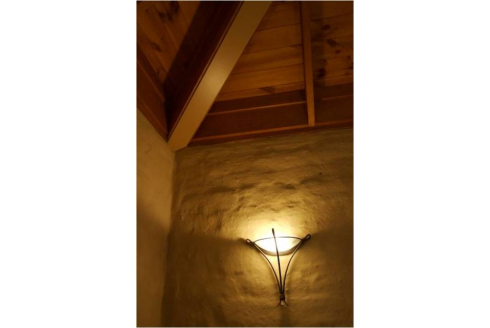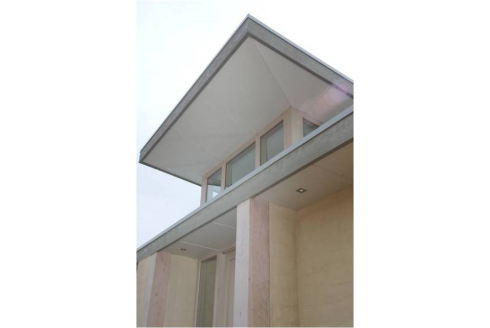The evolution of an idea
BY: The Director of ecoPod, Greg Slingsby
The fire: Black Saturday 7/02/2009
Our company headquarters in the North East of Melbourne narrowly escaped the devastation of the Black Saturday fires. I learnt the family home I grew up in had been lost and many family and personal friends in St Andrews and Kinglake were directly impacted by the fierce fire storm of that day. I myself was called to help family in the Yarra Valley and watched as the blaze drove its way through Steels Creek. I ended up in Dixons creek fighting alongside my brother in-law in a battle we won to save his family home.
As a person, a father and a builder I was deeply moved by the loss of life and property and set about to do something to help re-build my local community.
Rebuild in what:
In the aftermath of this fire there wasn’t much left. This had really been huge. As the teams of surveyors and clearance experts sifted through the remains of the regions homes one amazing observation was repeatedly made. Nearly every mud brick wall had survived. The number of mudbrick homes lost and the great amount of walls still standing reminded the entire local community and particularly the mud brick building specialists of the amazing power of earth wall fabric to survive such heat.
One of our local mudbrick makers went through some of the region only two days later. He was commissioned by the Premier to make a submission to the royal commission. The report contains many images of mud walls still standing. It is available for viewing and downloading at www.amcer.com.au. Stories abound of people sheltering in the most intense of environments within their mudbrick home and surviving the storm. Houses that did burn were all left with the tell tale legacy of earth walls still standing. This was despite virtually every other wall fabric failing. When molten glass lies at the base of mudbrick walls that once held the window you realise that the conditions of that day were a test way beyond those demanded to comply with any fire standard or any other previous building standard.
Mud brick walls: A very high fire rating
Mudbrick (Earth Brick) provides un-paralleled defence against fire and a standard 250mm wide brick has a tested fire rating of 4 hours. (CSIRO Bulletin 5. Earth Wall Construction. FOURTH EDITION. G.F. Middleton. Revised by L.M. Schneider 1987) After four hours they turn the gas off in a laboratory, but that Saturday no material had that luxury and most were punished badly where mud brick still remained. A four hour fire rating puts earth brick walls at the top of the fire rated wall fabric chart. In contrast to the few other materials that share this lofty position, earth brick is a natural product, low in embodied energy and has a unique organic form that enhances any built environment. It is clear therefore that building a mudbrick home is not only a sensible approach to building in fire zones but an aesthetic and eco-friendly one as well.
Mud Brick homes: Are they the answer?
It became obvious then that when re-building in these bush fire affected regions people should consider using mud brick. It quickly became apparent to me however that there were difficulties with this. Although beautiful and often exquisitely built, traditional mudbrick homes are not to everyone’s taste or budget.
Mudbrick buildings are synonymous with hand crafted workmanship and special design. There is no doubt that the level of structural detail resolution is much higher than in other forms of building. I have spent most of my career bringing these buildings to life. There are however some realities that surround the commercial production of these buildings. They require specialist building and carpentry skills, they are labour intensive and they are costly.
These time, cost and skill constraints with this traditional building form are now way beyond the majority of many seeking to build new homes in the bush fire region. Further the style of home that mudbrick makers build is not to every ones taste and it is currently treated unfairly by the Victorian energy rating program.
It became clear that there were several impediments to its wide re-use in these areas.
The dilemma:
So here we have a fantastic fire rated wall fabric that is a natural, low embodied energy product that should be used widely in rebuilding in the bushfire affected areas, but is in danger of being underused.
My question then became a very big one, it was how do we?
Build the best and safest buildings we possibly can using earth brick.
Build affordably and cost effectively.
Build quickly to get people back onto their land as fast as possible.
Present buildings with a contemporary image and widest possible appeal.
Make them modern and comfortable.
Deal with the energy rating constraints placed on classic mud brick homes.
Make these buildings affordably conform with new bushfire codes.
To build homes that blend as beautifully with the bush as mud brick homes do.
To build relaxing and simple homes.
I was due to give a talk at a local building conference with a focus on the bushfires and contemporary mudbrick homes and all I had was this massive question. How could these homes really be the answer. Something had to change. I still remember the moment with a cup of tea in hand on my back veranda that the solution came to me, it was so simple. I have named it, EARTH VENEER.



